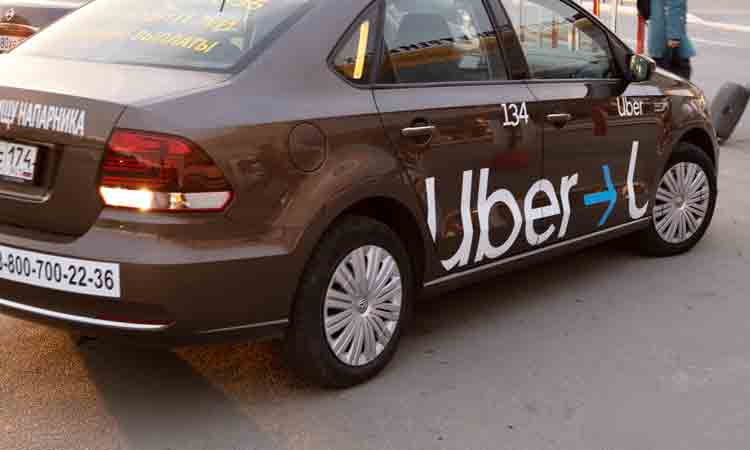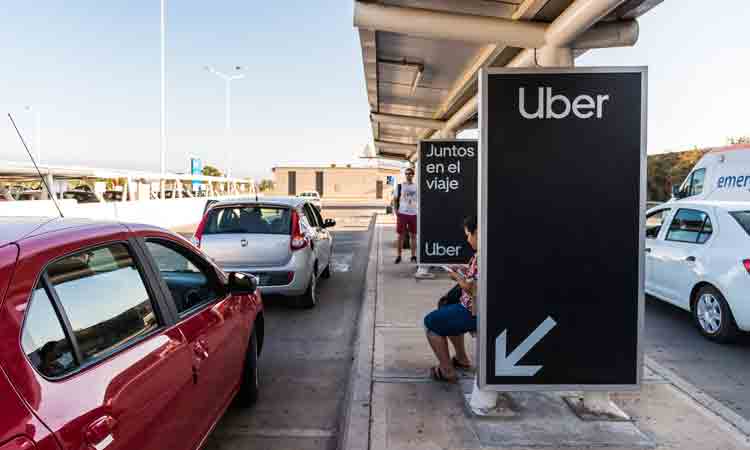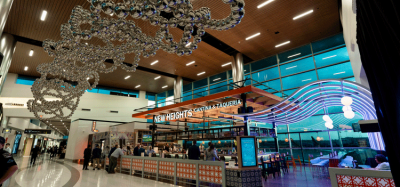Uber secures safe airport surface access during COVID-19
- Like
- Digg
- Del
- Tumblr
- VKontakte
- Buffer
- Love This
- Odnoklassniki
- Meneame
- Blogger
- Amazon
- Yahoo Mail
- Gmail
- AOL
- Newsvine
- HackerNews
- Evernote
- MySpace
- Mail.ru
- Viadeo
- Line
- Comments
- Yummly
- SMS
- Viber
- Telegram
- Subscribe
- Skype
- Facebook Messenger
- Kakao
- LiveJournal
- Yammer
- Edgar
- Fintel
- Mix
- Instapaper
- Copy Link
Posted: 21 August 2020 | Rob Mitchell - Uber Technologies | No comments yet
Rob Mitchell, Global Business Development Lead for Airports at Uber Technologies, details how in response to the pandemic, procedures have been amended to increase health and safety standards during a passenger’s journey to the airport; setting the stage for the recovery of airports.


More than six months since life changed immeasurably for virtually everyone across the globe, the impact on travel measured against any past crisis of the modern era is nothing short of staggering. As airports, cities and countries begin to reopen and start moving again, safety will continue to be a key priority in Uber’s decision making. Operating the largest ride-hailing network in over 600 airports and 63 countries, Uber has a responsibility to get people and goods moving again safely.
Actions focused on safety
Although we are a technology company, the nature of our business brings the digital and physical world together. We have on-the-ground operational staff in most of the cities, airports and markets where we operate, so we collaborated closely with experts and health authorities around the world, including the CDC in the United States and the World Health Organization.
We expanded a process supported by a global team, available 24/7, to support public health authorities in their response to the epidemic and to halt accounts of riders or drivers who may have been exposed to the virus.
We temporarily suspended our PIN dispatch system at airports (where it was previously launched), suspended UberPool (shared ride services) across all cities and UberCopter in New York City.
We also ramped up support to our community and cities, making financial commitments including:
- Allocated $50 million to PPE for drivers and couriers
- Purchased more than 25 million masks for drivers and couriers
- Provided $19 million in total financial assistance to nearly 50,000 drivers and couriers diagnosed with COVID-19 or asked to self-isolate due to pre‑existing conditions by a public health authority
- Provided 10 million free rides and food deliveries to healthcare workers, first responders, seniors, students and other underserved groups.
Door-to-door safety standard
Moving forward, one thing is utterly clear: We all have a role to play in helping to keep one another safe and healthy while travelling. That’s why it’s important that riders, drivers and couriers know what they can – and must – do, in order to use our services. Informed by medical experts, Uber’s teams have built tools and given access to information that drives shared accountability; critical to keeping everyone safe.
All riders and drivers are now asked to confirm via a new in-app checklist that they’ve taken safety measures and are wearing a mask or face covering (exemptions apply depending on local regulations regarding people with health conditions or young children).


The technology will verify if a driver is wearing a mask by asking them to take a selfie with the mask on before they go online. Only after we verify that the driver is covering their face will the driver be able to start accepting trips. Our mandatory mask policy will remain in place indefinitely, operating in the U.S., Canada, Mexico, India, France and most countries throughout Europe, the Middle East and Africa.
To encourage social distancing, we are asking riders to use only the back seat of vehicles and have reduced the number of passengers eligible for an UberX ride from four to three.
We have expanded our two-way feedback system that has long helped ensure both riders and drivers uphold certain standards by providing an opportunity to submit feedback on issues like vehicle quality, navigation and speeding. We have now added new options for feedback including having no face cover or mask. If a rider or driver ever feels unsafe about starting a ride, we have implemented flexible cancellation policies, so our customers know they always have the option to cancel a trip without penalties.
Partnership and recovery
We know the impact on airports is severe and unprecedented, and that a full recovery is likely to take years. We’re hearing from many that the two top priorities going into recovery are keeping passengers safe, and recovering the business by reducing costs and accelerating revenue growth. Creating a safe, predictable and consistent journey for passengers no matter which airport they use, or the segment of the journey they’re on, will be key to rebuilding consumer confidence. Equipped with services built specifically for airports, Uber can help provide an enhanced experience for passengers travelling to an airport.
While signs point to a long, difficult recovery for travel, we believe that by working more closely together, we can improve travel for our shared customers and, in so doing, help airports recover faster.
Biography
Rob Mitchell is the Global Business Development Lead for Airports at Uber Technologies. He is responsible for Uber’s commercial partnership strategy with airports to drive improved experiences for customers, revenue growth and operational excellence for airport partners. Mitchell joined Uber in 2018 after almost a decade of experience in the aviation industry at JetBlue Airways Corporation, where he worked in finance, strategy, government affairs and airport affairs.


















